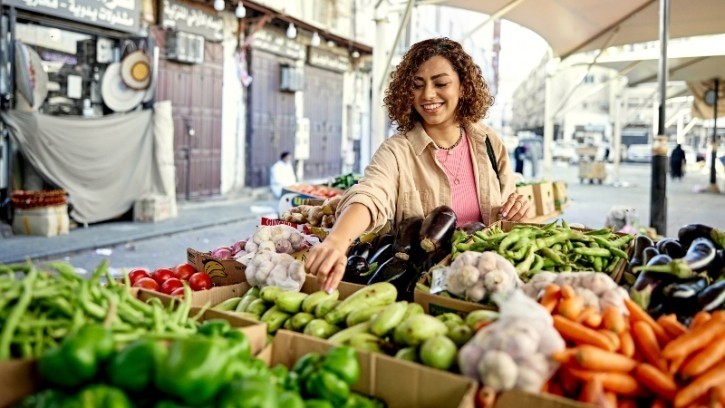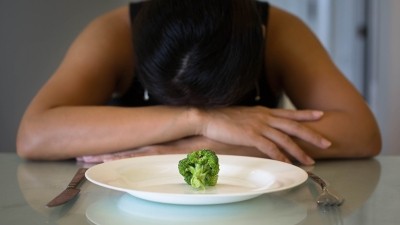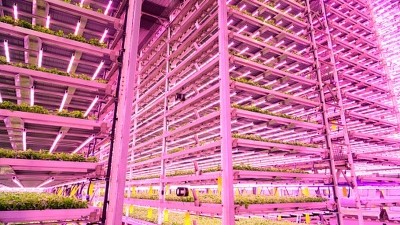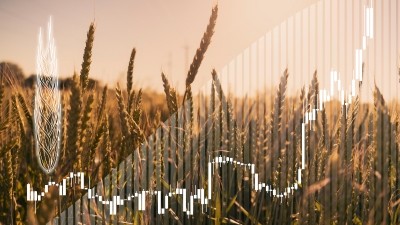Strengthening food security in the Middle East: Strategies for success on the road to self sufficiency – In-depth analysis

The importance of food security has taken centre stage since the pandemic when supply chains to the region, which relies heavily on imports, were severely strained.
This was further exacerbated by the Russia – Ukraine conflict, again in terms of supplies, but also in relation to soaring costs.
Therefore countries in the region have been striving to increase food security, but there remain significant hurdles to be overcome.
The scale of the challenge is highlighted by the latest Global Food Security Report, which ranks 113 countries across the globe.
The best performing in the GCC is the UAE in 23rd place, but it has publicly stated it wants to be in the top spot by 2050.
Elsewhere in the region, Qatar is 30th, Oman 35th and Saudi Arabia 41st, Jordan 47th and Kuwait 50th.
If all of these countries are going to move up the rankings, it will require government, industry and academic collaboration, coupled with adoption of the very latest cutting-edge innovations in the agtech space.
That’s why the latest developments in these areas will feature at the forthcoming World Agri-Tech Innovation Summit from December 4-5 at the Conrad Dubai.
Organised by Rethink Events, part of FoodNavigator publisher William Reed, it will address how the power of agtech can boost domestic food production in countries across the Middle East, Africa and South Asia.
It will also showcase technologies that can transform agriculture in climate-stressed regions, from gene editing for plant resilience, to soil restoration through to regenerative agriculture, and energy efficient controlled-environment agriculture.
Before then, we have assessed some of the very latest food security challenges and opportunities in the region with input from Bayer, Marmore, the research arm of Kuwait Financial Centre (Markaz), and the Global Food Security Index.
Challenge 1: Water Scarcity and climate change
Hugo Hagen, Senior Bayer Representative – Middle East, who will be participating in the Dubai summit, said the world faces the urgent challenge to create agricultural systems that help farmers adapt to climate change impacts and run a commercially viable business, while also protecting the planet, limiting the further expansion of farmland and renewing Earth’s natural ecosystems.
He said: “One of the most significant challenges is water scarcity. Many Middle Eastern countries have limited access to freshwater resources, and this directly impacts agricultural production. Countries such as Jordan, Saudi Arabia, and the United Arab Emirates are particularly at risk due to their arid climates and reliance on water-intensive agriculture. Additionally, climate change exacerbates these challenges, leading to more frequent and severe droughts, as well as extreme temperature variations, which can disrupt food production”
Marmore agrees, noting in one of its recent reports that average global crop yields for maize or corn are anticipated to witness a decrease of 24% by late century owing to projected increases in temperature, shifts in rainfall patterns and elevated surface carbon dioxide concentrations due to human-caused greenhouse gas emissions.
Economist Impact, which produces the Global Food Security Index, also pointed out that the least food-secure countries are active conflict zones and face severe climate risks: Syria is at the bottom of the list, followed by Haiti and Yemen . Consistent with past years of the index, six of the bottom ten scoring nations in 2022 come from Sub-Saharan Africa, where climate risks are most acute and three countries are also dealing with conflict
Challenge 2: High food imports
As Marmore points out, GCC countries import about 85% of their food, with around 93% of cereals, and approximately 62% of meat and 56% of vegetables. This makes the countries vulnerable to supply chain disruption, global rise in prices and protectionist trade policies.
Hagen at Bayer concurred, adding: “Many countries in the region depend heavily on food imports, making them vulnerable to disruptions in global food supply chains. Geopolitical instability in the region can also threaten food security, as it can hinder the flow of essential food items.”
Meanwhile data from the Global Food Security Index shows that the food security improvements made a decade ago have not been sustained.
“The world made big gains in food security from 2012 to 2015, with overall GFSI scores jumping by 6%. However, structural issues and significant risks in the global food system subsequently led growth to slow, and for the past three years the trend in the overall food security environment has reversed. Stalled progress reflects volatility in agricultural production, weak investment in agricultural research and development (R&D), scarcity of natural resources, rising inequality, and trade and supply-chain volatility.”
Challenge 3: Affordability and accessibility
Intrinsically linked to food security, is affordability and accessibility, both of which are major problems for the Middle East.
And this is not solely down to supply chain issues. Many domestic producers in the region feel hampered by the region’s desire for free trade, meaning that they are often undercut by cheaper imports that are protected through tariffs and other financial support in their home nations.
The Global Food Security Index shows that many Middle East countries score lower when it comes to their food accessibility ranking versus their overall food security total.
In relation to affordability, Marmore noted that freight costs experienced a significant surge, increasing by seven-fold in the 18 months following the pandemic, which can be attributed to shipping and logistical restrictions.
Furthermore, the cost of fertilizers remains at historically elevated levels in 2023 even after falling from the highs of 2022.
“Heightened prices for the past two years can be accounted for events including the imposition of Western sanctions on Russia (being a leading exporter), an export ban on phosphate fertilizer by China, and escalated prices of natural gas.”
In addition, many GCC countries have faced volatile food inflation levels in recent years
Opportunity 1: Government support
One of the great reasons for optimism is that governments in the region are acutely aware of the food security challenges, and appear determined to address them.
As Hagen at Bayer points out, in recent years there have been innovative approaches and policies to address food security in the Middle East.
One prominent example is the UAE Food Security Strategy – a comprehensive and forward-thinking initiative aimed at ensuring a stable and sustainable food supply for the nation.
Hagen adds: “Launched in 2018, this strategy underscores the UAE's commitment to safeguarding its food security in the face of global challenges. It focuses on key pillars, such as increasing food production, diversifying food sources, reducing food waste, enhancing food safety and quality, implementing advanced technologies, and promoting research and development in agriculture.”
Other governments in the region are implementing policies, too, to promote local food production and reduce dependence on imports. These policies often include subsidies, incentives, and regulations to stimulate agricultural growth, he added.
Marmore also pointed out that Qatar has also framed a National Food Strategy.
“Such strategies are broadly aimed at increasing the domestic production of strategic food items, diversifying import sources, limiting waste, and building adequate reserve capacity.
“Kuwait has also submitted a proposal on a strategic plan for food security until 2035 to the National Assembly,” it added.
Opportunity 2: AgTech adoption
Hagen states that the UAE’s multifaceted approach to food security also includes initiatives such as supporting local farmers and adopting innovative farming techniques, promoting vertical and indoor farming, investing in advanced technologies like precision agriculture, and establishing strategic international partnerships to secure a consistent food supply.
“In doing this, the UAE Food Security Strategy not only addresses immediate concerns but also positions the UAE as a leader in the pursuit of a sustainable and resilient food supply system,” he said.
Furthermore, Abu Dhabi has an AED1bn program to support launch of agritech companies in the emirate, while AeroFarms AgX, launched by Aero Farms and supported by the Abu Dhabi Investment Office, is reported to be the world’s largest indoor vertical farm for R&D.
Marmore also points to Dubai’s Food Tech Valley. One of the world’s premier agritech cities, it aims to cultivate over 300 different crops through methods such as vertical farming and hydroponics.
Dubai has also developed a Food Security Dashboard to better monitor its food security objectives.
“The dashboard leverages artificial intelligence and data analytics to measure the five main indicators of food security - the supply index, stock availability, local production, consumption levels, and the cost of vital commodities,” Marmore states.
Opportunity 3: Public-private partnerships
It is clear that the scale of the food security challenge in the region can’t be solved in isolation. It is going to require sustained collaboration across industry, government and academic / research institutions.
This will be a key focus of the forthcoming summit in Dubai, with Rethink Founder and CEO Jennie Moss stating: “With countries around the world increasingly experiencing extreme climate events, the technologies being developed for desert farming will be critical to the future of sustainable food production. This summit is attracting huge attention as a result.
“Agtech innovation is on the rise across the Middle East, Africa, and South Asia, with a focus on desert-tech and sustainable solutions for smallholder farmers. This summit aims to foster greater collaboration between stakeholders across the region.”
Hagen at Bayer agrees, adding that no country, institution or industry can tackle these challenges alone.
“We must encourage open dialogue and co-creation across public and private sectors,” he says.
He believes that public-private partnerships can work together to develop crops and agricultural practices that are more resilient to extreme weather conditions, including droughts and heatwaves.
“By fostering partnerships and collaboration across sectors, we can collectively work toward a more food-secure future in the Middle East, where all citizens have access to safe, nutritious, and affordable food.”
Speakers at the Dubai summit include Martien Van Nieuwkoop, Global Director for Agriculture and Food at the World Bank; H. E. Eng Mohammed Mousa Alameeri ,Assistant Undersecretary, Food Diversity Sector at the UAE Ministry of Climate Change and Environment; Hugo Hagen, Senior Representative, Middle East at Bayer; and Dina Saleh, Regional Director, Near East, North Africa and Europe Division from the International Fund for Agriculture Development.
Find out lots more information and register as a delegate at: https://worldagritechdubai.com/












